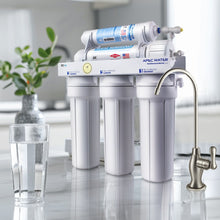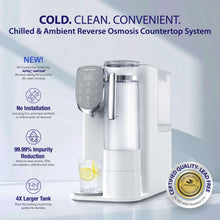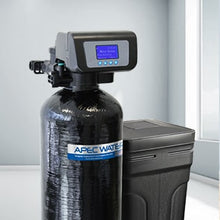Fluorides in water can be detrimental or beneficial. It all depends on the concentration. Surface water supplies are normally low in fluorides (less than 0.5 ppm). Some have no fluoride at all. W...
Almost all natural waters contain chloride and sulfate ions. Their concentrations vary considerably according to the mineral content of the earth in any given area. In small amounts, they are not...
Carbon dioxide gas (CO) is present in the air to the extent of 0.03 percent by volume and 0.05 percent by weight. Almost all natural waters contain some carbon dioxide which they gain in several ...
Alkalinity of Drinking Water Explained
The alkalinity refers to the measure of water’s capability to neutralize the acids. Alkalinity of water may be due to the presence of one or more of a number of ions. These include hydroxides, carb...
ROLE OF REVERSE OSMOSIS IN WATER PURIFICATION
The discovery and development of membrane water treatment processes (ultrafiltration, electrodialysis, and reverse osmosis) began in the 1920s, but these did not really become practical in water t...
Total Dissolved Solids in Water
A total dissolved solid (TDS) is a measure of the combined total of organic and inorganic substances contained in a liquid. This includes anything present in water other than the pure H20 molecules...
SODIUM / METHANE / PHENOL IN DRINKING WATER
Sodium salts are present to a greater or lesser degree in all natural waters. Their concentrations vary from a few parts per million in some surface supplies to several hundred grains per gallon i...
In water treatment, we are concerned with silica because of its capacity to form scale deposits on surfaces it comes in contact with. The silica content of water ranges from a few parts per milli...
Oxygen in Drinking Water Supply
The water in a raindrop is one of the cleanest sources of water available. Rainwater can absorb gases such as carbon dioxide, oxygen, nitrogen dioxide, and sulfur dioxide from the atmosphere. It ca...
In general, water for drinking and cooking should be wholesome. It should be both portable and palatable. It must be bacteriologically and chemically safe for drinking and be good tasting. It sho...
Have you ever noticed that the temperature of water from wells is remarkably constant? In wells that are from 30 to 60 feet deep, the water temperature is 2° to 3°F above the annual mean temperat...
The period of time since groundwater fell as rain can now be estimated by a technique based on the amount of tritium found in groundwater. This technique was developed by Dr. Willard Libby, who was...
Environmental Factors Influencing Water Supply
Water in nature is not existing on its own. Water is an important factor in a lot of natural events as well as the result of it. Let’s go deeper into the article to see how environmental factors ar...
Among all common water filtration methods, the process used for the removal of all dissolved salts from water is referred to as deionization. Deionization requires the flow of water through two i...
DOMESTIC WATER SOFTENER / CONDITIONING EQUIPMENT
Ultraviolet Sterilization is unmatched in its efficiency, simplicity, and dependability when applied as a microorganism disinfectant. UV sterilization is a proven solution to waterborne planktonic...



